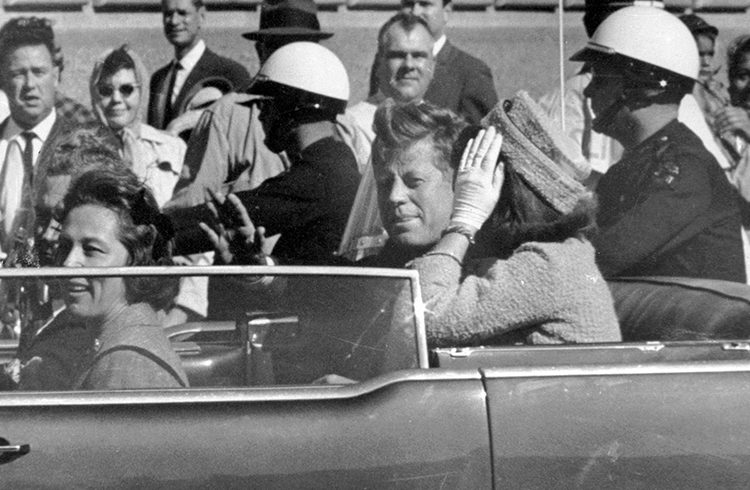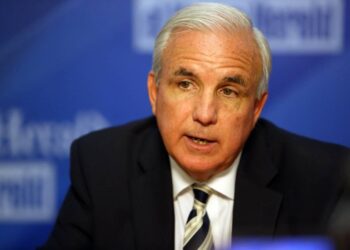In late 1992 the Congress of the United States legislated the President John F. Kennedy Records Collection Act ordering that the documents, filmed materials and recordings related to the assassination be disclosed in a period of 25 years, unless the president at the time determined the contrary due to damage identifiable to the defense, intelligence or foreign relations, among other aspects. Signed by President Bush (father), the act in turn also ordered the National Archives and Records Administration (NARA) to establish a specific and differentiated collection about the Dallas crime, which, as is known, is a real turning point in the history of the United States.
The act operated under certain preconditions, one of them the social and psychological impact of JFK (1991), of the well-known and controversial filmmaker Oliver Stone, a film that put a perfect finish in a collective imagination to an idea present since the beginning: Kennedy was executed by a conspiracy that involved actors like the FBI, CIA, the mafia, the Cuban exiles and the military high command. Twenty-two years later, on the 50th anniversary of the assassination (2013), a national poll carried out by Gallup revealed that 61% of Americans thought Kennedy’s death had been the consequence of what we in Cuba call “cama”, meaning that it was a setup; only 30% endorsed the conclusion of the Warren Commission (1964) in the sense of the lone shooter/assassin located on the southeastern corner of the sixth floor of the Texas book warehouse.
Last October 26 President Trump proceeded to implement that 1992 act, that is to say, to open the archives to the social eye, although with last minute restrictions imposed by the CIA and the FBI, which will have up to six additional months to make a final decision. As is affirmed, there remain some 18,000 records to be released, less than 1 percent of the total: some 500,000,000 pages.
The documents truly do not reveal that “smoking gun” some enthusiasts expected, resembling more the TV series type X Files than the historical investigation, but it is unquestionable that they reveal a bit more or complement issues/problems referred to actors and situations related to the assassination, through facts or ideopolitical construction. Or both at the same time. And, above all, they are worthwhile because of a no less important detail: they are one more step in the understanding of the Cold War mentality, something that inevitably is included in them.
Among those new texts, for the meantime two telephone calls, a New Orleans bar and an abrupt cut are worthwhile.
On November 24, 1963, after Oswald’s death, J. Edgar Hoover (1895-1972) dictated a memo about an anonymous call received at the FBI general headquarters in Dallas. He warned the local police twice. This is how he puts it:
Last night we received a call in our Dallas office from a man talking in a calm voice and saying he was a member of a committee organized to kill Oswald.
We immediately notified the chief of Police and we were assured Oswald would be sufficiently protected.
This morning we called the chief of Police again…and he again assured us that Oswald would be given the appropriate protection. However, this was not done.
A fault, at least, in the protection of the prisoner – but it could also be something else: With Oswald’s death, Hoover’s conclusion was as clear as it was categorical:
There’s nothing more in the Oswald case, except that he is dead. The thing I am concerned about and so is the Attorney General, Mr. [Nicholas de Belleville] Katzenbach, is having something issued so we can convince the public that Oswald is the real assassin.
A question is necessary: why did the old FBI gumshoe precisely choose the words “convince” and “real”?
The second anonymous call was not to the FBI but rather to Great Britain’s newspaper Cambridge News. It is a dispatch from the CIA station in London, dated November 23, 1963, on the day following the events. The source, Jaguar, is a non-identified agent from the MI5, the British intelligence service:
Jaguar reported that at 1805 GMT an anonymous call was made to Cambridge, England, to the chief reporter of Cambridge News. Whoever called just said that the reporter had to call the US embassy in London to get a scoop, and afterwards he hung up. Last night, after receiving the news of the president’s death, the reporter informed the Cambridge police about the aforementioned call…according to Jaguar’s estimates, that call was made around 25 minutes before the president was assassinated. The Cambridge reporter had never received a call of this type. Jaguar says he knows him and that he is a loyal person and with no security records.
Another document feeds back, as the previous one, the idea of knowledge and conspiracy, of something known beforehand. On November 27, 1963 – that is, five days after President Kennedy’s assassination -, E. L. McIntosh informs Lewis T. Huff, from the Secret Service, the testimony of citizen Robert C. Rawls, who…
was in a bar in New Orleans, LA, when he heard a man bet $100,000 that President Kennedy would be dead in three weeks. He did not remember having seen the man before and was not sure whether he could recognize him if he saw him again. He admitted that he was a bit intoxicated and said the man was also intoxicated. He said that at the time he did not pay attention because he thought that it was only the babbling of a drunkard, and drunkards bet on anything. However, he said, after the president’s assassination it occurred to him that this could be relevant and reported it to the authorities. He recalled, he said, that the man was dressed like a “blue-collar worker,” but that beyond that he could not describe him…. The man who made the bet was not at a table, but at the bar. He didn’t hear anyone call him by his name.
Lastly, the abrupt cut. An interview by attorney David Belin (1928-1999) – a member of the Warren Commission and of the Rockefeller Commission, who in the 1970s investigated the CIA – with Richard Helms (1913-2002), the agency’s director from 1966 to 1973, under Johnson and Nixon. According to his principal biographer, Thomas Powers (The Man Who Kept the Secrets. Richard Helms and the CIA, Alfred A. Knopf, 1979), “a gentlemanly planner of assassinations.” And with at least three additional data in a long and impressive service record: having destroyed documents and recordings that could have helped the investigators of Watergate; having lied to Congress about the agency’s role in the coup d’état that put paid to socialist President Salvador Allende and his People’s Unity government; and having imagined more than a thousand ways to get rid of Fidel Castro through a catalogue of devices at the level of the best novel by Ian Fleming:
Mr. Belin: Well, the end of my questions refers to the accusations that the CIA was involved in the conspiracy to assassinate President Kennedy. During the Warren Commission you were the director of plans. Correct?
Mr. Helms: I believe so.
Mr. Belin: Is there any information related to President Kennedy’s assassination that somehow shows that Lee Harvey Oswald was a CIA agent or an ag[ent]…
The hand that tore off the page continues being one of the mysteries. We don’t know the answer.
Influence and fate of JFK.
TN: Documents of the report were retranslated from the Spanish.










